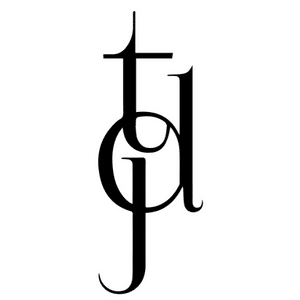Besom Pockets
Flapless pockets set into the jacket or trouser.
Blake Welting
A method of shoe construction in which the welt, the sole, the insole and upper are sewn together using a single seam, creating a more sleek and comfortable shoe.
Cashmere
Very fine goat hair that originated from the region surrounding Kashmir.
Derby
An open-laced style of shoe widespread in Europe, often double stitched and double soled. Also known as “Bluchers.” The most common variants are plain, full-brogues, and semi-brogues.
Flap Pockets
Besom pockets covered by a flap.
Full Brogue
A type of shoe decorated with perforated patterns, with winged toe caps and rows of perforations.
Full Canvas
The gold standard of jacket construction in which an interlining of canvas, made up of wool and horsehair, is sewn in between the inner suit lining and outer fabric and extends the full length of the jacket. A full canvas adds structure and padding through the chest, creating a clean drape that subtly takes the shape of the chest of the wearer over time.
Half Canvas
A form of jacket construction in which the canvas extends over the chest to around the top of the rib cage. This differs than Full Canvas construction in that the canvas extends the full length of the jacket.
Herringbone
A pattern consisting of parallel lines that slant in opposite directions forming V shapes.
Houndstooth
A repeating duotone pattern characterized by small (sometimes large for jackets), abstract four-pointed shapes.
Insole
The foundation of the shoe: a piece of leather between one-tenth and one-seventh of an inch [2.5-3.5 mm] thick, depending on the robustness of the shoe, on which the shoe is built. The initial stage is to nail the insole to the last. A feather is then formed with the gouge.
Lining
The inside of the jacket. Usually linings coordinate subtly with the color of the jacket, or sometimes are bold colors and patterns.
Mohair
A silk like hair that comes from the Angora Goat and is notable for its high luster and sheen. A wiry fiber that is virtually wrinkle resistant and is often blended with other fibers, such as wool and silk, to soften its springiness.
Monk Strap Shoe
A puritanical-looking shoe, as its name suggests. Its most striking feature is the fact that its quarters are fasted together with a buckle, or even two, and it is often richly decorated. It owes its elegance to its long vamp.
Notched Lapels
Lapels with a triangle “notch” cut out of the upper edge near the collar bone. They are the most conservative choice and are less formal than a peaked or shawl lapel.
One Button Jacket
Traditionally was reserved for tuxedos, in recent years the one button jacket has become more popular in less formal wear. It looks great in peaked lapel suits and with a modern silhouette.
Peaked Lapels
Lapels with little “peaks” that point upward. A slightly less conservative choice that is considered more formal than a notched lapel. Peaked lapels are usually found on double breasted jackets, though in recent years it has become common to find them on single breasted jackets. A peaked lapel is also a common choice for a tuxedo lapel.
Pick Stitching
Visible stitches around the lapels and edge of the jacket. Pick stitching conveys craftsmanship and touch of old-fashioned tailoring.
Pocket Square
A small piece of fabric worn in the jacket pocket. Often times nothing more than a handkerchief folded neatly into straight lines, a pocket square can also be much more colorful and decorative. It’s a great finishing touch that doesn’t need to be overdone to lend distinction, modernity, and luxury to your look. The pocket square should not match your tie.
Rise
Refers to the length of the crotch to the waistband. The rise on a pair of suit trousers should fit as high and close as possible, as it makes moving easier and decreases the stress on the fabric.
Shawl Lapel
A continuous lapel without a notch or a peak breaking the outer line. It is a simple, elegant choice and is rarely seen on anything other than a tuxedo.
Slip-on
A shoe style with no laces, or buckles, into which the wearer simply slips his foot (also called a loafer).
Sole
A component in the lower part of the shoe. Single-soled shoes have only a top sole, which makes contact with the ground. Double-soled shoes have a top sole and a middle sole.
Suede
A soft leather that has been rubbed on one side to make a surface that has the appearance and feel of velvet. A versatile material that can be continually reconditioned back to like-new.
Tweed
A rough woolen fabric made usually in twill weaves, commonly associated with Ireland and Scotland.
Twill
A pattern that is made in a way as to produce a sequence of diagonal lines. The diagonal direction, unlike the way clothing is stressed when worn, makes twill very strong and durable.
Two-Button Jacket
The most common jacket, it’s timeless and flattering on most body types because its V points the eye to the slimmest point of a man’s waist (the area near the top button).
Vents
A vent allows for both a tailored fit and easy movement. A center vent is traditional; two side vents are more modern and give the jacket a more fitted silhouette.
Wingtip
Heart-shaped toe cap. The elegant line extends along the vamp almost as far as the heel.
Working Buttons
Also called “Surgeon’s Cuffs”, working buttons are functional and can be unbuttoned to allow the sleeves to be rolled up. Working buttons on a suit are indicative of a custom-made suit.

